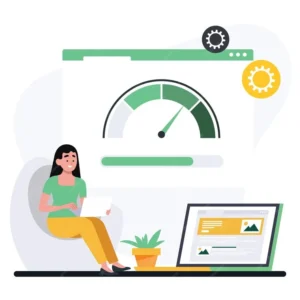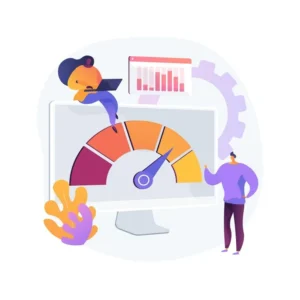Speed Optimization: Tools and Techniques
Welcome to our comprehensive guide on website Speed Optimization for enhanced user experience and SEO performance. In today’s fast-paced digital world, website speed is a critical factor that can significantly impact user engagement, bounce rates, and search engine rankings.
In this article, we’ll explore various tools and techniques to optimize your website’s loading speed, ensuring a seamless browsing experience for your visitors.
Understanding the Importance of Website Speed

Website speed is more than just a matter of convenience—it’s a crucial factor that affects user satisfaction, conversions, and search engine rankings.
Research has shown that users expect websites to load quickly, with a delay of just a few seconds enough to cause frustration and abandonment. Additionally, search engines like Google consider page speed as a ranking factor, prioritizing faster-loading websites in search results.
Therefore, optimizing your website’s loading speed should be a top priority for any online business or website owner.
Identifying Speed Bottlenecks
Before you can optimize your website’s speed, you need to identify the factors that are slowing it down. Several tools and techniques can help you analyze your website’s performance and pinpoint speed bottlenecks. Tools like Google PageSpeed Insights, GTmetrix, or Pingdom provide detailed reports on various aspects of your website’s performance, including load times, server response times, and opportunities for improvement.
Common speed bottlenecks include large image files, excessive scripts, render-blocking resources, or server issues. By identifying and addressing these issues, you can significantly improve your website’s loading speed.
Optimizing Images for the Web
Images are often the biggest contributors to slow loading times. To optimize your website’s speed, it’s essential to optimize your images for the web. This involves compressing file sizes, choosing the right file formats, and resizing images to fit the dimensions of your website without sacrificing quality. Tools like Adobe Photoshop, TinyPNG, or ImageOptim can help you compress and optimize your images for the web, reducing their file sizes without compromising visual quality.
Minifying CSS and JavaScript
Excessive CSS and JavaScript files can also slow down your website’s loading speed. To optimize your website, consider minifying CSS and JavaScript code to reduce file sizes and eliminate unnecessary whitespace, comments, and code redundancy.
Several online tools and plugins are available to automate the minification process, making it easier to streamline your website’s code and improve performance.
Implementing Browser Caching
Browser caching allows your website visitors to store static files locally on their devices. Thus, reducing the need to re-download them each time they visit your site. By leveraging browser caching, you can speed up page load times and improve overall performance.
To implement browser caching, you’ll need to configure your web server to send appropriate cache headers. And set expiration times for different types of files. Content management systems like WordPress offer plugins that make it easy to enable browser caching and optimize your website’s performance.
Utilizing Content Delivery Networks (CDNs)
Content Delivery Networks (CDNs) distribute your website’s static content across multiple servers worldwide, reducing latency and improving load times for users in different geographic locations. By caching content closer to your visitors, CDNs can significantly reduce the time it takes for your website to load, especially for users located far away from your server.
To implement a CDN, you’ll need to sign up for a CDN service provider, configure your CDN settings, and integrate the CDN with your website. Many popular CDN providers offer WordPress plugins that make it easy to set up and manage a CDN for your website.
Testing and Monitoring Performance
Optimizing your website’s speed is an ongoing process. It’s essential to regularly test and monitor your website’s performance using tools like Google PageSpeed Insights, GTmetrix, or Pingdom.
These tools provide valuable insights into your website’s speed, performance, and opportunities for improvement. Track key performance metrics such as load times, server response times, and page size. And use the data to identify areas for optimization.
Make iterative changes to your website. Such as optimizing images, minifying code, or implementing caching strategies, and monitor the impact on performance. By continually monitoring and improving your website’s speed, you can provide visitors with a faster, more seamless browsing experience. As well as maintain a competitive edge in the online landscape.
Encouraging Further Engagement with Calls-to-Action

Leverage the improved speed and performance of your website to encourage further engagement from visitors. Include relevant calls-to-action (CTAs) throughout your site, inviting visitors to explore additional articles, products, or services, and deepen their engagement with your brand. By providing valuable content and opportunities for further engagement, you can build trust and credibility with your audience and encourage them to take desired actions.
The Importance of Evergreen Content and How to Create It
By implementing the tools and techniques outlined in this guide, you can optimize your website’s speed and performance. Thus, providing visitors with a faster, more seamless browsing experience. Remember that website speed is not only crucial for user satisfaction but also for SEO rankings and conversions. Stay proactive in monitoring and improving your website’s speed to ensure continued success in the competitive online landscape.
Contact us:
At flowbig.org, we are dedicated to addressing the most common SEO challenges and providing you with creative and precise solutions. Our team of SEO experts has created a series of short tutorials to help you improve your website’s visibility in search engines.




